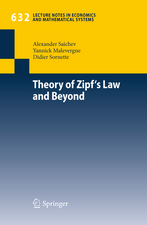Critical Risks of Different Economic Sectors: Based on the Analysis of More Than 500 Incidents, Accidents and Disasters
Autor Dmitry Chernov, Didier Sornetteen Limba Engleză Paperback – 16 dec 2019
Because of these differences, unique risk-mitigation measures will need to be implemented in one industry that cannot be implemented in another, leading to large managerial differences between these broad economic sectors.
Based on the analysis of more than 500 disasters, accidents and incidents - around 230 cases from the production sector and around 280 cases from the service sector - the authors compare the risk response actions appropriate within different sectors, and establish when and how it is possible to generalize the experience of dealing with risks in any given industry to a wider field of economic activity. This book is mainly intended for executives, strategists, senior risk managers of enterprise-wide organizations and risk management experts engaged in academic or consulting work. By setting out clearly the sector differences in risk management, the authors aim to improve the practice of general risk assessment with regard to identifying and prioritizing risks, and of risk control with regard to planning appropriate mitigation measures.
Preț: 526.67 lei
Preț vechi: 619.62 lei
-15% Nou
Puncte Express: 790
Preț estimativ în valută:
100.80€ • 103.88$ • 85.10£
100.80€ • 103.88$ • 85.10£
Carte tipărită la comandă
Livrare economică 03-17 martie
Preluare comenzi: 021 569.72.76
Specificații
ISBN-13: 9783030250331
ISBN-10: 3030250334
Pagini: 258
Ilustrații: VIII, 271 p.
Dimensiuni: 155 x 235 x 29 mm
Greutate: 0.4 kg
Ediția:1st ed. 2020
Editura: Springer International Publishing
Colecția Springer
Locul publicării:Cham, Switzerland
ISBN-10: 3030250334
Pagini: 258
Ilustrații: VIII, 271 p.
Dimensiuni: 155 x 235 x 29 mm
Greutate: 0.4 kg
Ediția:1st ed. 2020
Editura: Springer International Publishing
Colecția Springer
Locul publicării:Cham, Switzerland
Cuprins
Introduction.- Specific Features of Risk Management in the Industrial and Agricultural Sectors.- Specific Features of Risk Management in the Service Sector.- Conclusion.
Notă biografică
Dmitry Chernov is a senior researcher at the Chair of Entrepreneurial Risks at ETH Zurich. He has more than 10 years of experience as a corporate emergency management consultant within the following industries: oil and gas, electric power, chemicals, FMCG, transport, telecommunication and other retail services. He specializes in research of managerial differences between different economic sectors and in the development of practical solutions for efficient risk information transmission that enable timely decision-making before and during industrial disasters.
Didier Sornette is Professor on the Chair of Entrepreneurial Risks at ETH Zurich, also a professor of the Swiss Finance Institute, and is associated with both the departments of Physics and of Earth Sciences at ETH Zurich. He is also a fellow of the AAAS among many other titles and memberships. Prof. Sornette is a passionate researcher in complex system and extreme risks. He uses rigorous data-driven mathematical statistical analyses combined with nonlinear multi-variable dynamical models including positive and negative feedbacks to study the predictability and control of crises and extreme events in complex systems, with applications to all domains of science and practice, including earthquake predictions, financial bubbles and crashes, nuclear risk, cyber risk, social networks, medical sciences.
Textul de pe ultima copertă
This book explores the major differences between the kinds of risk encountered in different sectors of industry - production (including agriculture) and services - and identifies the main features of accidents within different industries.
Because of these differences, unique risk-mitigation measures will need to be implemented in one industry that cannot be implemented in another, leading to large managerial differences between these broad economic sectors.
Based on the analysis of more than 500 disasters, accidents and incidents - around 230 cases from the production sector and around 280 cases from the service sector - the authors compare the risk response actions appropriate within different sectors, and establish when and how it is possible to generalize the experience of dealing with risks in any given industry to a wider field of economic activity. This book is mainly intended for executives, strategists, senior risk managers of enterprise-wide organizationsand risk management experts engaged in academic or consulting work. By setting out clearly the sector differences in risk management, the authors aim to improve the practice of general risk assessment with regard to identifying and prioritizing risks, and of risk control with regard to planning appropriate mitigation measures.
Because of these differences, unique risk-mitigation measures will need to be implemented in one industry that cannot be implemented in another, leading to large managerial differences between these broad economic sectors.
Based on the analysis of more than 500 disasters, accidents and incidents - around 230 cases from the production sector and around 280 cases from the service sector - the authors compare the risk response actions appropriate within different sectors, and establish when and how it is possible to generalize the experience of dealing with risks in any given industry to a wider field of economic activity. This book is mainly intended for executives, strategists, senior risk managers of enterprise-wide organizationsand risk management experts engaged in academic or consulting work. By setting out clearly the sector differences in risk management, the authors aim to improve the practice of general risk assessment with regard to identifying and prioritizing risks, and of risk control with regard to planning appropriate mitigation measures.
Caracteristici
Explores the major differences between the kinds of risk encountered in different sectors of industry, namely production and services It is intended for executives, strategists, senior risk managers of enterprise-wide organizations and risk management experts engaged in academic or consulting work Based on the analysis of more than 500 disasters, accidents and incidents


























